I did not know that Diaa Refai was a rock climber when I met
him at Frisbee practice, but it was not a surprise when I found out. He looks
like a mountain man, with a scruffy beard, broad shoulders, and a rugged smile.
In the Instagram picture that caught my eye, however, one could not make out
his features at all. He looked like an ant, clinging almost 30 meters up a
majestic sandstone wall in
Wadi Rum and
framed by a deep blue sky patterned with snowy cirrus clouds. The image, taken
on January 1, was captioned, “First page of a 365-page book. Write a good one.”
اضافة اعلان
The positivity was befitting one of Jordan’s
coolest and kindest communities. Refai works at
Climbat Amman, one of the largest climbing
gyms in the Middle East and the epicenter of the Jordanian climbing scene, and
he and a group of about 15 other Jordanian sport climbers had traveled to Wadi
Rum to kick off the new year in the best way they knew: scaling its majestic
walls and spending a night camping in the desert.
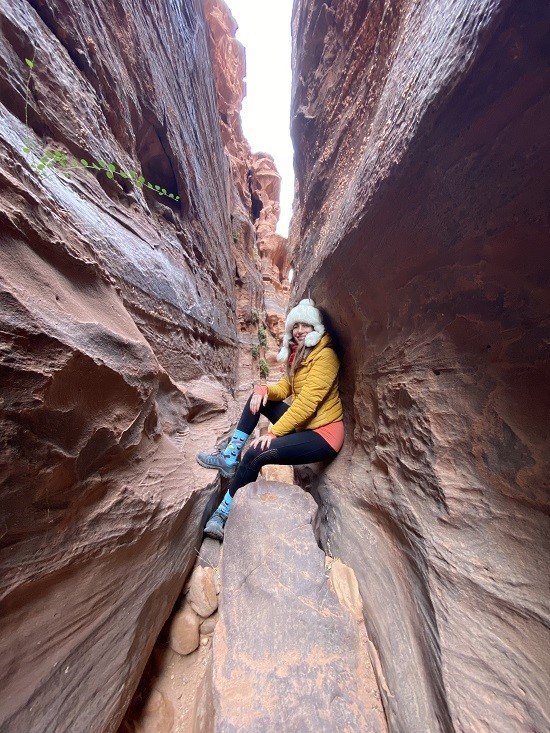 (Photo: Reda Aldalati)
(Photo: Reda Aldalati)
Wadi Rum is well-known to
tourists as both a breathtaking vacation destination and as one of the premier
climbing hubs in the Middle East, but what those tourists might not know is
that all Jordan, from Aqaba to Mafraq, is rich with opportunities for rock
climbers.
Climbat is a world-class gym to train at in
Amman’s Marj Al-Hamam neighborhood,
Badiya is a newer and smaller bouldering gym in the
hip Jabal Luweibdeh neighborhood, and there are plenty of crags featuring
routes of varying difficulty in Fuheis, Ajloun, Irbid, and Karak, not to
mention world-class trekking, bouldering and canyoning opportunities in the
wadis which range from the Dead Sea coast all the way down south to Aqaba.
The bedouins have been climbing the ancient
desert routes of Wadi Rum for hundreds of years, and adventurous foreign
mountaineers have been visiting sporadically since at least the 1940s, chasing
rumors of killer crags and unexplored ascents overlooking pristine,
otherworldly landscapes.
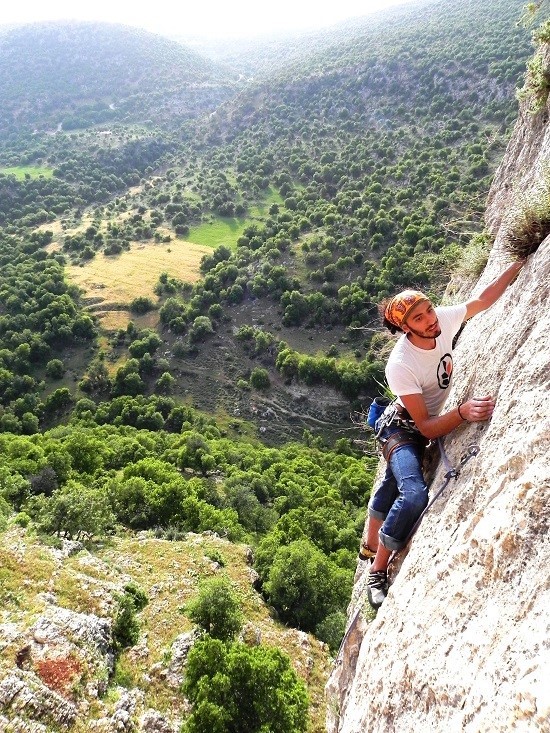 (Photo: Abdelqader Abbas)
(Photo: Abdelqader Abbas)
British climber Tony Howard
details over 500 routes in the Treks and Climbs in Wadi Rum, Jordan guidebook
he published in 1987, and Hakim Tamimi, the man who really started the sport
climbing community in Jordan, was profiled as part of a 2016 Outside Magazine
piece by Nancy Prichard-Bouchard, titled “Roped Up in Arabia: Rock Climbing in
Jordan”.
According to Abdelqader “Abood” Dabbas, who
co-founded the
Jordanian Climbing Federation (JCF) and serves as the federation’s
vice-president, the Jordanian climbing scene really took off in 2008 when
Tamimi met a French-German climber named Wilfried Colonna who had fallen in
love with Jordan and was bolting routes near Ajloun Castle — this was the first
bolted crag in the north of Jordan. After learning how to drill bolts from a
Spanish climber named Carlos, Tamimi started bolting crags in Fuheis; today,
these are called “Old Fuheis” and “New Fuheis” by locals, although one of the
major cliffs in Fuheis is actually called “Hakim’s Cliff” on thecrag.com, an
acknowledgment of his pioneering work on the walls and a testament to his
significant legacy.
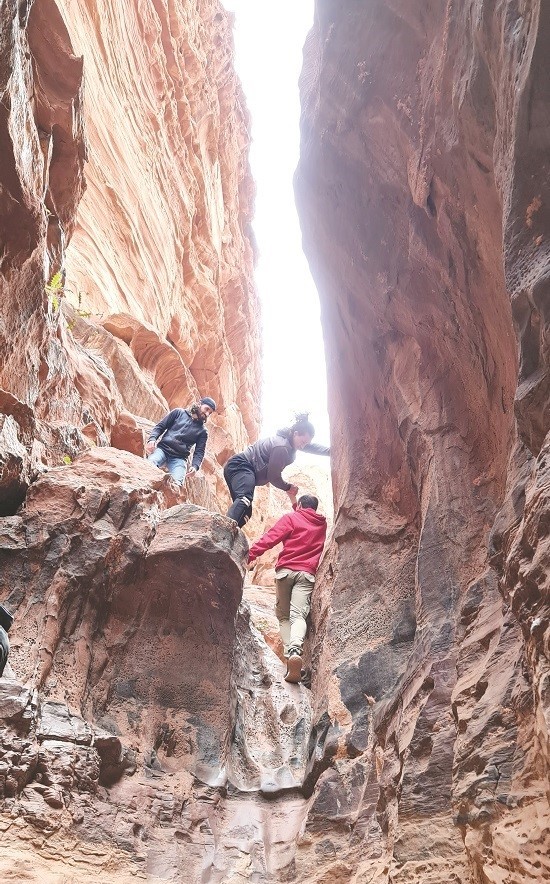 (Photo: Nazar Salim)
(Photo: Nazar Salim)
Asked for his opinion on the
best climbing spot in Jordan, Dabbas said: “Almost 100 percent of foreign
climbers go to Wadi Rum because it is a magical place, but it is mostly known
for traditional (“trad”) climbing. There are only two sport climbing areas
there. But if you want to climb in the north, my favorite is a cliff called Tor
Mutlag or “Sami Cliff” in Ajloun, with very nice routes.”
Sami Cliff is Dabbas’ personal favorite, and
Wadi Rum is almost universally acknowledged as Jordan’s most spectacular
climbing destination, but both Dabbas and Refai agree that Fuheis is the most
popular spot among local climbers for a few reasons. First, it is close to
Amman. The climbing community is mostly based in the capital, with Climbat as
its epicenter, and Fuheis is only about half an hour away by car. Additionally,
the Old Fuheis, New Fuheis, and Taamreh farm cliffs offer a variety of
relatively easy routes, all of which were recently re-bolted by the JCF with
help and funding from the local climbing community, so most beginners start
their outdoor climbing experience there before tackling more difficult routes
farther north and south.
Dabbas also said that for experienced climbers
who are willing to drive a bit farther from Amman, there are rich and
relatively unheralded climbing opportunities in the north. He and a JCF
colleague have checked over 140 routes over the past two years, fixing anchors
and replacing bolts for the benefit of Jordanians and foreigners alike, and he
stated with pride: “We have plenty of beautiful routes in the north, around
350. Climbing in Jordan is not just Wadi Rum.”
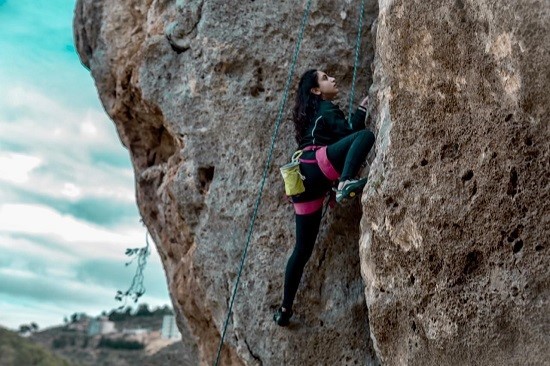 (Photo: Beesan Halabi)
(Photo: Beesan Halabi)
Although the community’s
origins predate its establishment in 2010, the importance of Climbat to the
development of the Jordanian indoor and outdoor climbing scenes cannot be
overstated. The leaders and coaches of the present community, which Refai
estimates to be over 200 strong, almost invariably got their start there, often
falling in love with the sport and becoming gym members before eventually
getting jobs at the gym and becoming coaches and expert outdoor climbers in
their own right. “Without Climbat there is no climbing community ... the
opening of Climbat generated more local climbers, and while Hakim was bolting
new routes in the north, an Austrian coach (Wolfgang Vogl) at Climbat was
teaching more (locals) to become instructors,” Dabbas said.
Even Hamza Kalimat, one of the co-owners of the
newly established Badiya gym in Luweibdeh’s Manara Center, got his start as a
member at Climbat. Kalimat was always passionate about calisthenics, strength
conditioning, and athletic competition, and kept noticing the towering gym
(until recently, it boasted the largest indoor wall in the Middle East) en
route to hiking and Dead Sea trips. When he finally stopped in to try it, he
got hooked, becoming a member and an avid climber.
He said: “When I started going there, many
people helped me, and the community there was very friendly and supportive —
the community at Climbat is beautiful.”
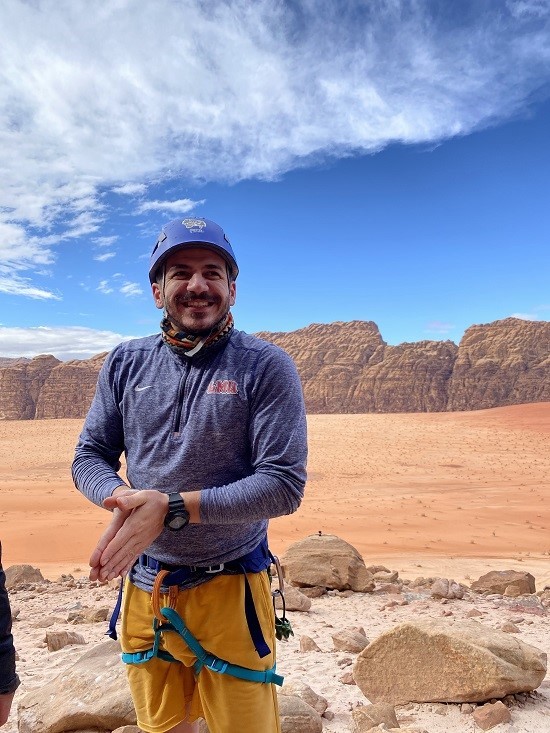 (Photo: Ana Mernaia)
(Photo: Ana Mernaia)
Kalimat found himself
focusing more on bouldering, which entails climbing shorter routes which do not
require ropes and equipment, but do require a lot of focus, technique and
physical strength. When he and his wife Muntaha Al-Kilani, who is also a
climber, decided to open a gym in Luweibdeh about six months ago under the
BarBedu workout team brand, they resolved to include a bouldering section with
some aggressive routes, as well as three basic top-roping routes geared toward
teaching beginners how to climb.
Climbat also helped give birth to the national
Jordanian Climbing Federation, which is recognized by the
Jordanian Olympic Committee since
sport climbing is now an official Olympic sport. Climbat hosts the JCF’s youth
and adult national teams’ training sessions, and has hosted several
international sport climbing competitions, including the International Indoor
Climbing World Cup in 2011 and the first JCF-sponsored regional competition
last August.
The formation of the JCF offered a
platform for local climbers to train and compete alongside expats living in
Amman and visiting climbers from Palestine and Lebanon. Their next competition
is scheduled for March 25, 2022, and they hope to add climbers from Egypt and
Saudi Arabia to the roster of competitors.
While a foreign climber won the men’s
competition last year, a homegrown talent took first place in the women’s
division. Beesan Halabi first tried climbing in high school PE classes, but
discovered her passion for the sport with the help of the Jordanian climbers
who came before her, including Dabbas and Diaa. She was so passionate about the
sport after her first trip to Climbat that she asked for a job on the spot, and
they hired her to help other beginners learn how to climb safely.
She is now one of the best climbers in Jordan
and a member of the newly formed national team. And while the sport is still
more dominated by men in Jordan, “they are supportive toward female climbers —
I got my first climbing shoes as a gift, I was always invited to go try outdoor
climbing, and there was a big push from the community to get me more involved
in the sport, which I think is really wonderful,” she said.
Reminiscing on her victory at last year’s
competition, Halabi, who had never competed in any sport before trying sport
climbing, described how it felt to climb competitively in front of a big crowd
of cheering people: “As soon as I put my hand on the first hold and my feet
left the ground, it was insane how my brain just muted every sound, and it was
just me and the wall. When I put the last clip in, I was ecstatic. I have
always wanted to experience being first place on a podium, and that was just
crazy cool.”
She said she hoped that more women and more
Jordanians in general get involved in the sport, stating: “Climbing is a unique
sport. There is a mental aspect and a physical aspect, and it is like solving a
puzzle; I think more people should take part in it.”
To that end, the Climbing Federation recently
partnered with
Mercy Corps and the
Ebleen Youth Sports Club to build a bouldering wall in Ajloun, which local
youth and community members can use free of charge. As part of the
project, the Ajloun community also has access to two officially trained JCF
coaches who will help people learn safe climbing techniques and eventually try
some of the many routes that are accessible within 20 minutes of the project.
The goal of the federation, which has an
official website and can also be found on Instagram and Facebook, is to promote
and increase awareness of sport climbing and mountaineering in Jordan, to set
standards for climbing instructors in cooperation with the Ministry of Tourism,
to continue hosting competitions, and to create a fun and safe climbing
environment in Jordan’s gyms and natural spaces.
So far, it has succeeded, and it seems that
Jordan will not be a hidden gem for long, as the growing community of Jordanian
climbers continues to build the country’s reputation as one of the best
climbing destinations in the world.
Read more Where to Go





